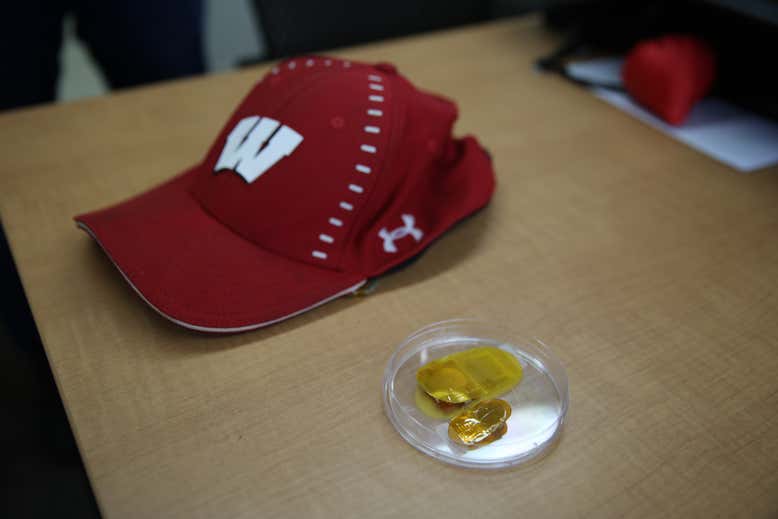A New Hat That That Reverses Male Balding By Zapping The Scalp With Electrical Pulses
Source: Thailand Medical News Nov 24, 2019 5 years, 5 months, 2 days, 2 hours, 21 minutes ago
Researchers from University Of Winconsin-Madison have developed a prototype hat that emits electrical pulses to the scalp to help stimulate hair on patients suffering from
male baldness.
In their studies of which the findings were published in the Journal Of American Chemical Society, an electric patch made hairless mice grow fur and may
reverse balding in men when fitted inside a specially designed baseball cap.

Currently, men who don’t want to go bald can treat
hair loss using minoxidil lotion, finasteride pills or hair transplant surgery. But minoxidil doesn’t work for everyone, finasteride can reduce sex drive and fertility, and surgery is painful and expensive.
By stimulating the scalp with electric pulses, it has also been shown to restore hair growth. However, it isn’t a very practical treatment because it involves being hooked up to a machine or battery pack for several hours a day.
Being
innovative and to overcome this hurdle,Dr Xudong Wang at the University of Wisconsin-Madison and his colleagues have developed a wireless patch that sticks to the scalp and generates electric pulses by harnessing energy from random body movements.
The innovative 1-millimetre-thick plastic patch contains layers of differently-charged materials that produce electricity when they come into contact and separate again a phenomenon known as the
triboelectric effect.
In studies, when the flexible patch was attached to the backs of rats, their movements caused it to bend and stretch, activating the
triboelectric effect. The resulting electric pulses stimulated faster hair re-growth in shaved rats compared with minoxidil lotion and inert saline solution.
 Images of mouse skin before (left) and after (right) treatment with the patch (pink rectangle)
Images of mouse skin before (left) and after (right) treatment with the patch (pink rectangle)
and other baldness treatments Xudong Wang, University of Wisconsin–Madison
Dr Wang’s team tested the patch on mice that were hairless because of a genetic deficiency in hair growth factors. After nine days, 2-millimetre-long fur grew on their skin under the patch, whereas only 1-millimetre-long hair grew on adjacent skin areas treated with minoxidil and saline solution. Hair density was also three times greater for the patch-treated areas than those treated with minoxidil and saline.
Analyzing the skin of the mice under a microscope revealed that the patch seemed to work by stimulating the release of natural chemicals that encourage hair growth such as keratinocyte growth factor and vascular endothelial growth factor.
Dr Wang also tested the patch on his father, who has been going bald for the past few years. “It helped him to grow a lot of new hairs after one month,” Dr Wang told
Thailand Medical News via a phone interview.
The team has now designed a baseball cap that encases the whole scalp in the triboelect
ric materials to stimulate hair growth, and is seeking approval to test it in men in a clinical trial.
Dr Wang is confident it will work, because hairless mice are considered good models of male balding. It shouldn’t be uncomfortable to wear because it produces very gentle electric pulses, he says.
The hat will only work in men who are currently losing their hair or have recently become
bald, because the skin loses its ability to generate new hair follicles after many years of baldness, Dr Wang says.
One drawback is the hat is also unlikely to work as well when men sleep, because they won’t produce as many movements to power the device. Wang thinks that wearing it for a few hours per day should be sufficient to get results. “Small head movements during normal daily activity should be enough to power the device,” Dr Wang says.
The team holds a number of patents to the new innovation and are planning mass commercialization of the product by mid 2020.
Journal reference: ACS Nano, DOI: 10.1021/acsnano.9b03912

